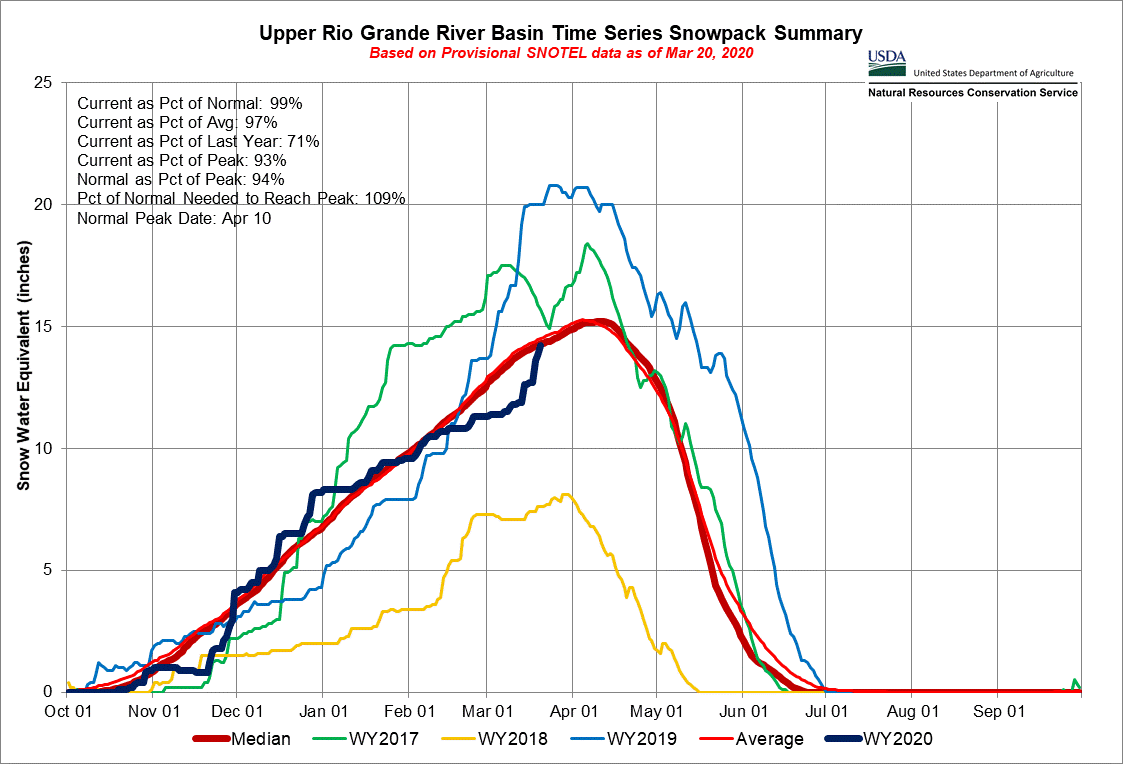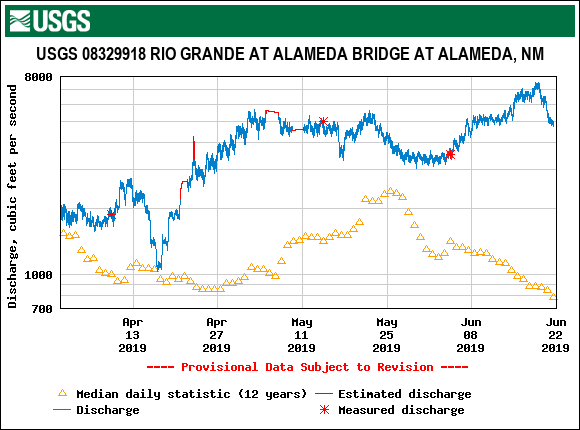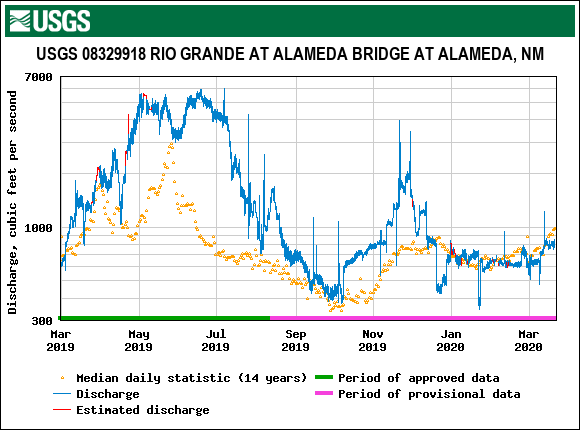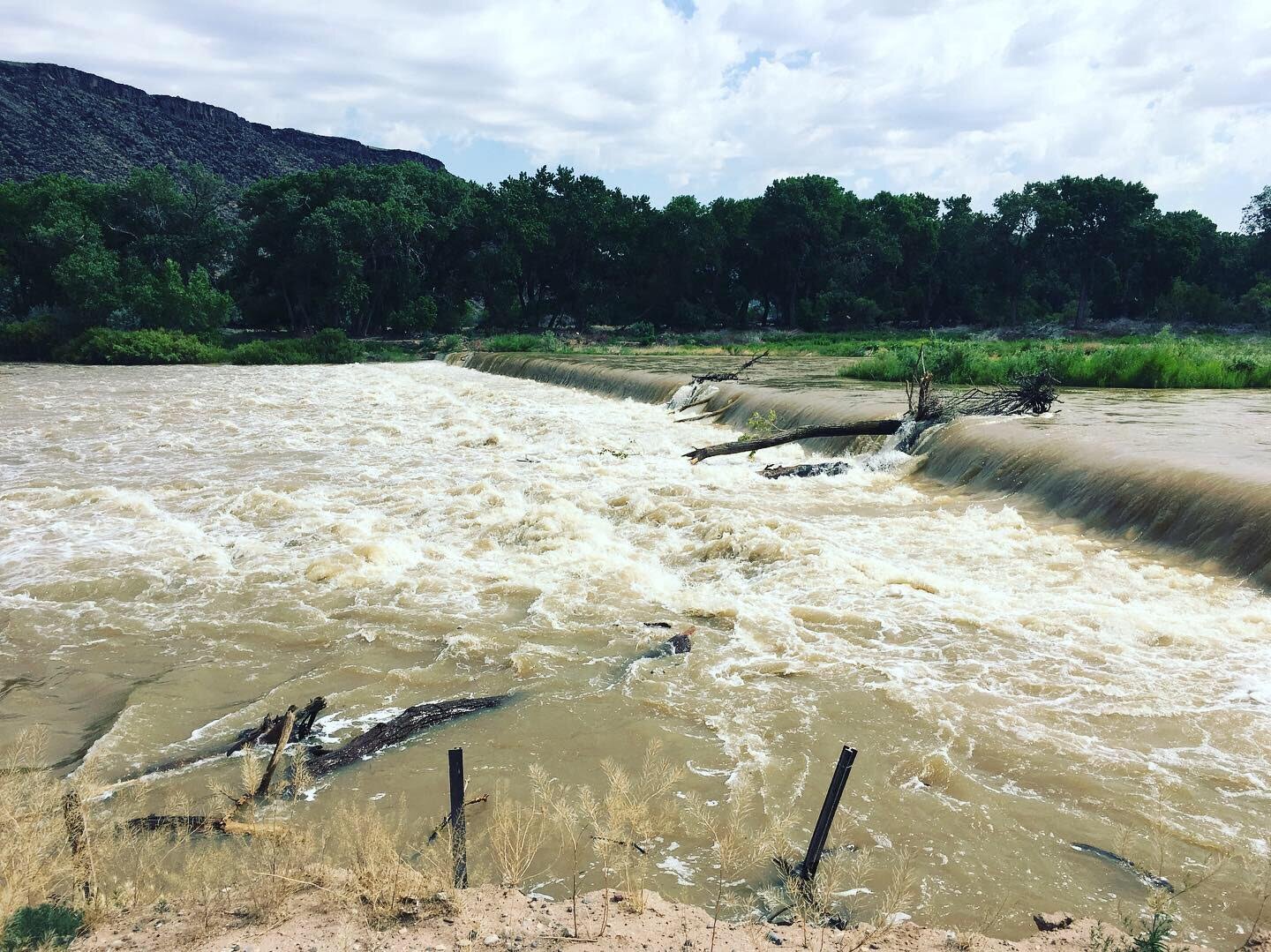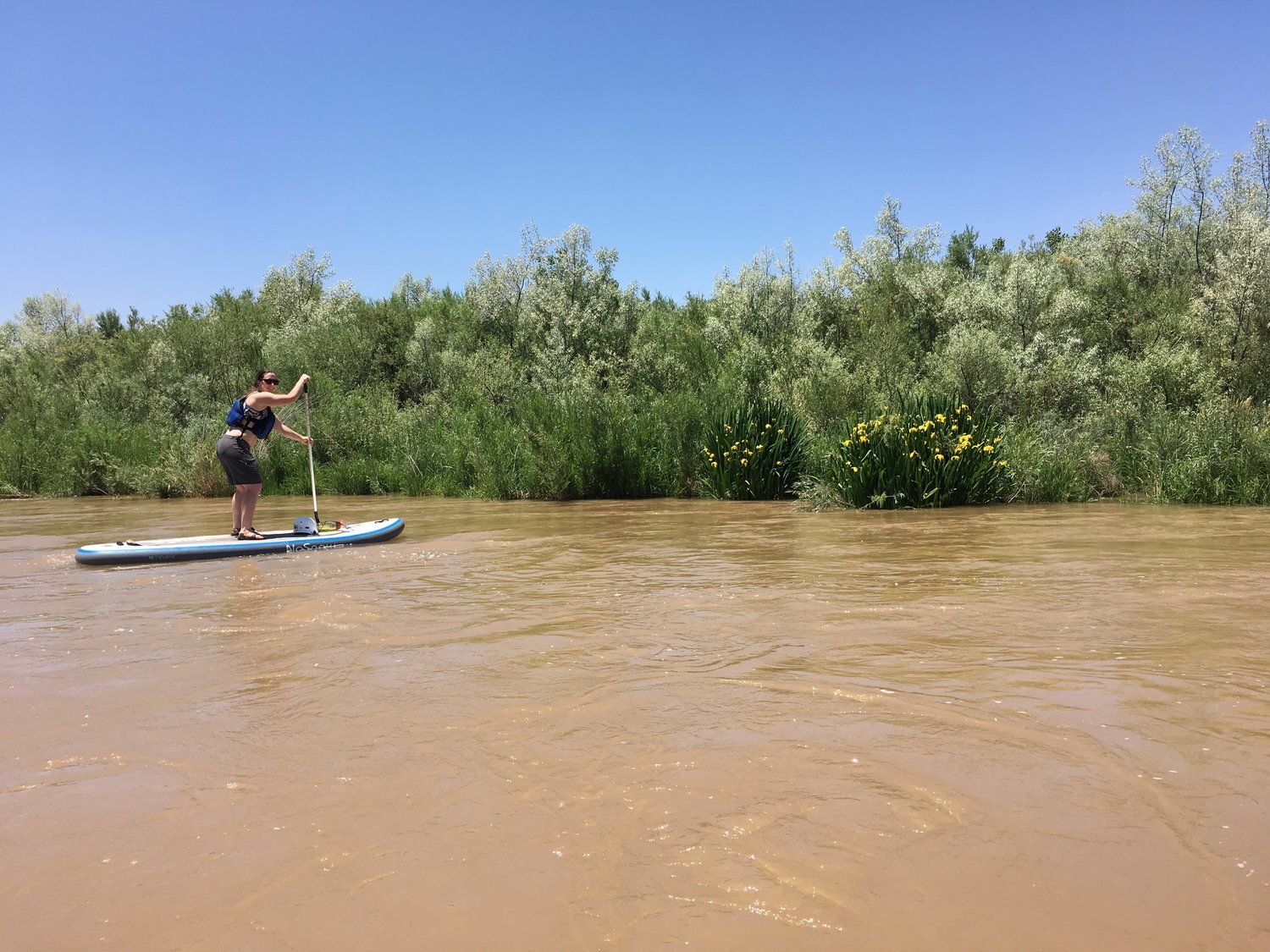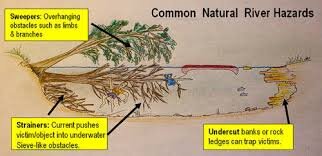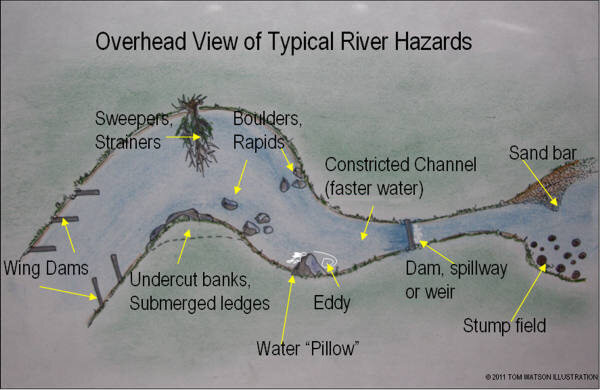I Want to Paddle the Rio Grande, Can You Help?
The winter of 2019 was very gracious with snowfall in the headwaters of the Rio Grande, and the Rio Chama. What started out as a great year for winter sports like snowshoeing and skiing has led to a wonderful spring paddling season. This is because of the amount of snow that has fallen and the “snow water equivalent” which has been further enhanced by a cooler than average spring.
Now that the rivers have come up due to snow melt, we are seeing more water in the rivers than most people are used to experiencing. With the extra water comes additional safety concerns for commercial outfitters and weekend recreationist.
The Rio Grande in the Albuquerque Metro Area has been flowing above 1500 CFS (USGS Alameda River Gauge) since the beginning of April. What is normally a placid float down a Class 1 section of river has gained additional flow and current speed. The river is still a Class 1 trip at these flows, but the safety minded paddler needs to be aware of several hazards that come into play as the river rises. Learn more on River Classification and the boaters guide to river safety here from American Whitewater.
Hazards exist on all rivers, as all rivers have similar properties and composition no matter what watershed you are paddling. Local hazards very from watershed to watershed, based on geology, and how we humans have affected/altered the waterway.
New Mexico has several local hazards that we as paddlers need to be mindful of when we are on the river. Those include Low-Head Dams, and Jetty Jacks, while additional river hazards include undercut banks, sweepers, and strainers.
Paddling is generally an individual activity, but the experience is best enjoyed with a group of like-minded enthusiasts. Paddling in groups brings its own hazards, those can be related to, too many paddlers at any given time in a rapid, or by group floating while tied or tethered together.
How do we mitigate the risk while trying to enjoy the river? This can be accomplished several ways starting with education.
Know your limits. Learning what your local river(s) classification are, the local hazards, and whether you have the expertise to safely navigate your local waterways under the current conditions. Knowing whether your paddle craft is the correct vessel to safely navigate your local river also is important to having a safe outing. Most pool toys will float you, but is it safe or prudent to use that on a moving waterway?
Take a paddling class. Finding local instruction from an American Canoe Association Certified Instructor is the single best way to learn of the river hazards, weather concerns, and proper safety required to have any enjoyable time on the water.
Hiring a local river guide is also a great way to have any enjoyable experience on the water. They often know of which hazards you need to avoid and will often have tips and tricks that you can use later when you set out on your own river adventure.
How do I find Commercial Outfitters on my local waterway? Google often helps locating a reputable company for your personal interest. The American Canoe Association is also a great resource to find a local livery or outfitter.
Paddling is a great 4 season outdoor activity in New Mexico, that you can share with a multitude of people when done safely. Knowing before you go gives you an advantage that will ensure a fun and safe experience. Remember if your having fun, and your safe you will have the opportunity to enjoy this great outdoor activity for years to come.
About the Author:
Corey Spoores is the Co-Owner of MST Adventures and is an ACA Level 4 paddling instructor. He has been kayaking for 20 years and has been paddling canoes since he was 3 years old. Among the many roles he has held prior to starting MST Adventures, he is proud to have been a Patrol Boat Operator and Watercraft Officer, assisting in vessel safety checks and vessels in distress/ search and rescue operations on Lake Erie, for the Vermilion Police Department. He was a graduate of the H20 Dreams Apex River Leadership School in North Carolina in 2016.

